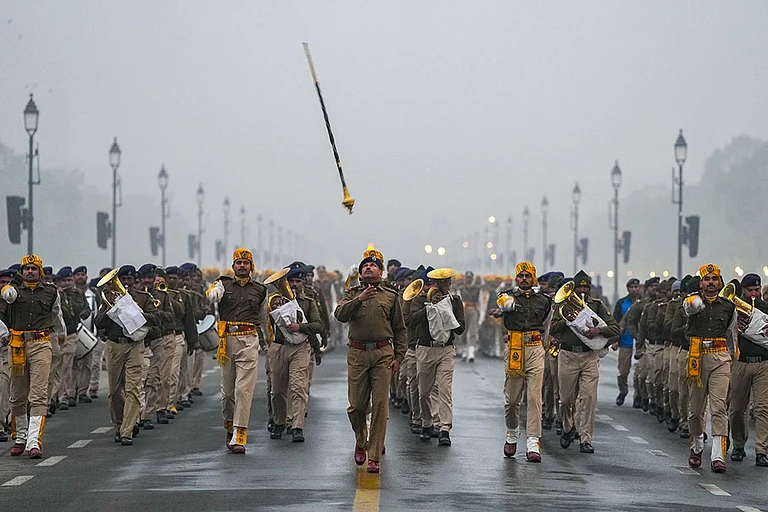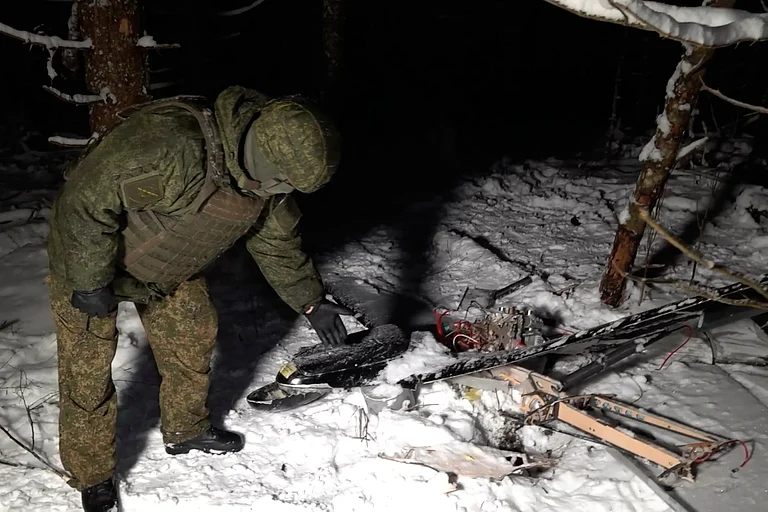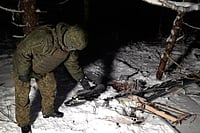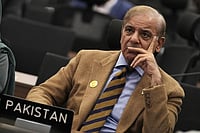According to the Federation of American Scientists (FAS), even though a reduction is very clearly observed in the overall nuclear weapons' arsenal since the Cold War, the world’s combined inventory of nuclear warheads still shows a very high level of stockpiling by more number of countries than before.
As of early 2022, nine countries across the globe possessed roughly 12,700 warheads.
What is a nuclear warhead/nuclear weapon/nuke?
A nuclear warhead or nuclear weapon is defined as an explosive device with massive potential to cause catastrophic destructions. For deriving their destuctive energy, nuclear warheads primarily bank on three different types of nuclear reactions- nuclear fission, nuclear fusion, or a combination of the two.
All nuclear weapons are technically thermonuclear weapons and may also be referred to as thermonuclear bombs, fusion weapons, hydrogen bombs, or H-bombs. They are categorised into two broad categories: fission and combination weapons, or the fusion-based designs which are even more destructive.
Nuclear weapons unleash enormous amounts of explosive force, which is measured in kilotons (1,000 tons of TNT) and megatons (1,000,000 tons of TNT), as well as heat and radiation.
A brief history of nuclear arms race
Till date, the world has witnessed the humongous destructive power of the nuclear weapons in two instances. Both were at the end of World War II when the United States dropped a nuclear bomb called' Little Boy' on Hiroshima, Japan, on August 6, 1945, and a second bomb called Fat Man on Nagasaki, Japan, on August 9, 1945. Little Boy detonated with an explosive force of approximately 15 kilotons, which leveled most buildings within a 1-mile radius.
According to official reports, the bombing of Hiroshima have caused 66,000 deaths and 69,000 injuries while Nagasaki bombing saw 39,000 deaths and 25,000 injuries.
Bombings of Hiroshima and Nagasaki during the time of the World War II was the trigger point that escalated the arms race between between the United States and the Soviet Union. The war earned the nukes the label of 'ultimate weapons of war'.
Stockpiling of nuclear weapons, which was an integral part of the Cold War also continued into the late 1980s.
The Bulletin of Atomic Scientists states that in1986 the nuclear arms race between the two countries was at its pinnacle.During this time, the Soviet Union possessed more than 40,000 nuclear warheads while the United States had 23,000.
Russia and the Unites States' predominance in the field of owning the maximum number of nukes is still relevant as it possesses 90 percent of all nuclear warheads across globe.
Who stands where in the nuclear power game
According to the Federation of American Scientists (FAS), it is estimated that there are approximately 12,700 nuclear warheads in the world today. It is true that the number we see today is far far fewer than either the U.S. or Russia possessed during their Cold War peak,but at the same time we also need to consider the increase in number of countries with access to nuclear power than there were 30-40 years ago.
As per FAS, Russia tops the list of countries owning nuclear weapons, with an estimated 5,977 total warheads. Of these, 1,458 are actively deployed (current START II treaty limits both the U.S. and Russia to 1550 deployed total), 3039 are inactive but available to be made active, and 1,760 are retired and awaiting dismantling while the numbers for The United States stands closely at with 5,550 total nuclear weaponsamongst which 1,389 are active, 2,361 inactive but available, and 1,800 are about to be dismantled.

But, the recent statistics also reflect on a fact that the number of warheads in global military stockpiles, which includes warheads assigned to operational forces, is witnessing a rise once again. France and Israel are maintaining relatively stable inventories.

Status of India, Pakistan and China
It is also very widely speculated that China, India, North Korea, Pakistan and the United Kingdom, as well as possibly Russia, are all thought to be increasing their stockpiles in next few years.
According to a report fied by The US Pentagon, China is expected to own 1,500 warheads by 2035.
In its annual report to the Congress on China’s ambitious military build-up, the Pentagon said Tuesday that "over the next decade, Beijing aims to modernise, diversify, and expand its nuclear forces.China's current nuclear modernisation exercise has exceed the previous modernization attempts in both scale and complexity"
China is investing in and expanding the number of its land-, sea-, and air-based nuclear delivery platforms and constructing the infrastructure necessary to support this major expansion of its nuclear forces, the report said.
The report also mentioned that China is also supporting this expansion by increasing its capacity to produce and separate plutonium by constructing fast breeder reactors and reprocessing facilities. In 2021, Beijing probably accelerated its nuclear expansion, it said.
The Pentagon said it estimates that China's operational nuclear warheads stockpile has surpassed 400.
According to the Swedish arms watchdog Stockholm International Peace Research Institute (SIPRI), in January 2022, India increased its nuclear weapons stockpile from 156 in January 2021 to 160. This took place at at a time when China activated new launchers and Pakistan continued to develop new weapon delivery platforms in the Indian neighbourhood.
Of India and Pakistan, the watchdog said, "India and Pakistan appear to be expanding their nuclear arsenals, and both countries introduced and continued to develop new types of nuclear delivery system in 2021."


























